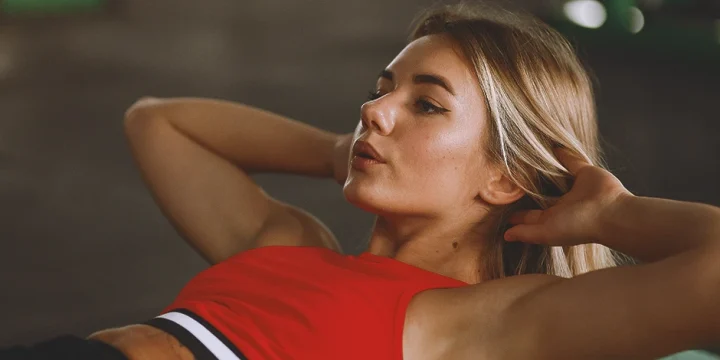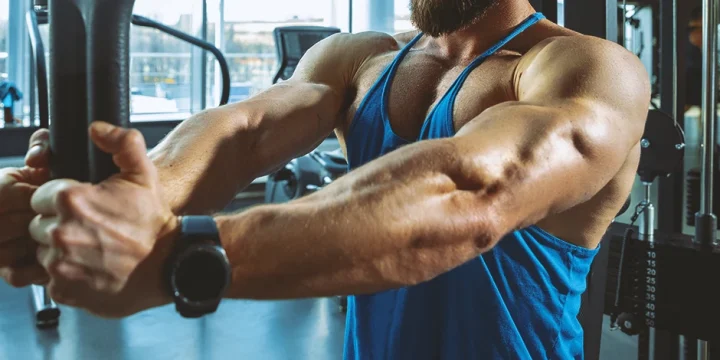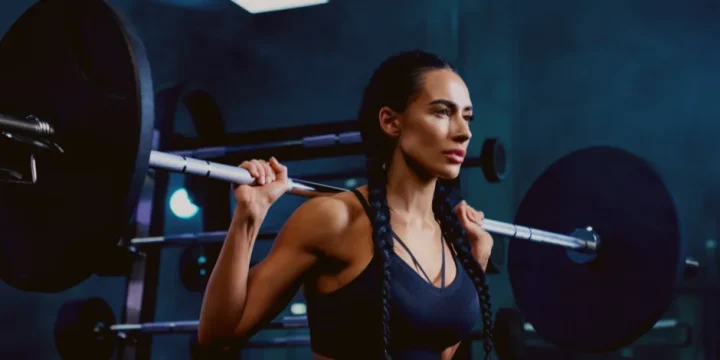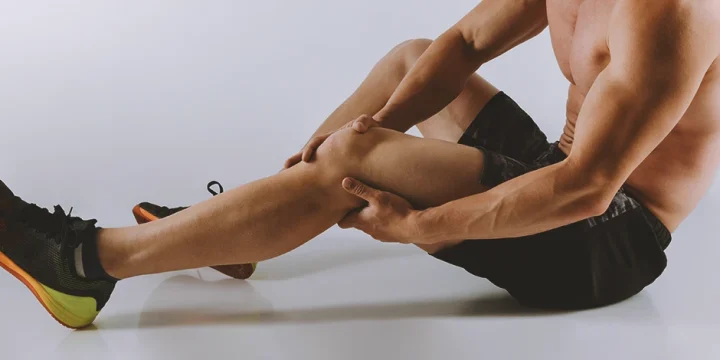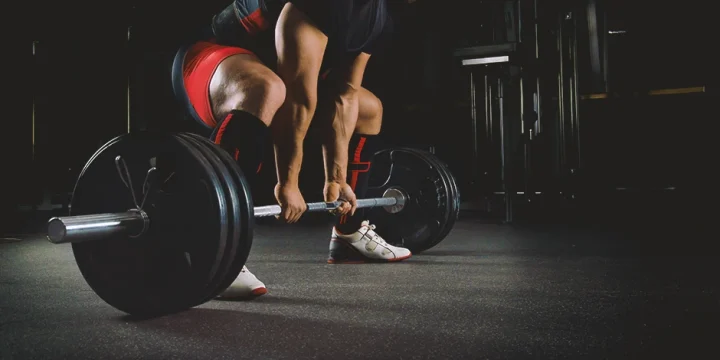Barbell is an almighty tool used for strength training, muscle mass gaining, fat loss, and power exercises.
Barbell exercises are excellent for targeting big muscle groups and strengthening the functional range of motion.
Andrew White, co-founder of Garage Gym Pro, explains that barbell exercises can work on all back muscles for strength building.
But what are the best exercises to perform with a barbell?
As a fitness trainer, I will provide my research and expertise on the best exercises you can execute using a barbell and the benefits of barbell exercises.
Keep on reading.
Quick Summary
- Barbells enable you to lift heavier with much control since you carry the bar with both hands and recruit numerous muscles at once.
- More weight may be loaded onto the barbell than dumbbells and kettlebells can give.
- Barbell exercises are also quite functional—squats, deadlifts, and overhead presses necessitate greater balance and proprioception than machine-based workouts.
The Best Barbell Exercises

1. Barbell Bench Press
A flat barbell bench press strengthens various upper-body muscles, including the arms, chest, and shoulders.
How to perform:
- Lie on your back on the bench, arms shoulder-width apart, with feet flat on the floor, and hold the barbell with your hands also shoulder-width apart.
- Your back should be slightly arched, with room between the bench and your lower back.
- Tuck the elbows in at a 45-degree angle by your sides and lower the bar towards your chest.
- As the bar reaches your chest, take a deep breath, push your feet into the floor, and quickly press the barbell back up.
- Repeat for reps.
Complete the barbell bench press with a spotter in a bench press rack.
Maintain focus on the ceiling to ensure the bar does not move out of position.
You can perform all variations of bench presses, such as barbell incline decline.
2. Standing Barbell Overhead Press
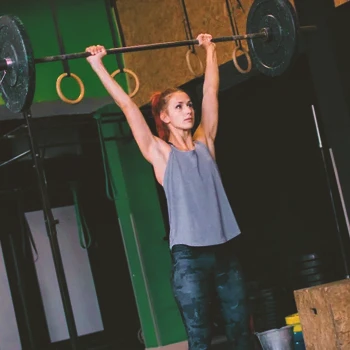
Lifting a big weight over your head is an old-school strength test.
The barbell overhead press necessitates strength, balance, shoulder stability, and mobility.
This exercise will build larger delts, a strong back, and increased overhead press power, transferring to the flat, decline, and incline barbell bench press.
How to perform:
- Place a barbell on your upper chest with both feet shoulder-width apart.
- Take a little wider-than-shoulder-width grip on the bar.
- Take a deep breath.
- While you push the bar straight up, brace your abdominals, glutes, and quads. Pause for a few seconds at the top before lowering.
- Repeat for the desired number of repetitions.
Placing your thumbs on the same side as the fingers may help you lift heavier weights by keeping the forearms in a more advantageous position.
Also Read: 10 Best Budget Barbells
3. Barbell Push Press
The push press employs the triple extensions of the hips, ankles, and knees, similar to what most overhead press sportspeople accomplish on the field and what you do at home or in the gym.
Also, the lower body dip enables you to raise more load overhead than the conventional overhead press.
Lifting greater weight overhead allows for increased muscle and strength.
How to perform:
- On a power rack, position yourself in front of a heavy barbell set at around chin height.
- Take a little wider-than-shoulder-width grip on the bar.
- Brace your abs, with your knees slightly bent, and then thrust the bar above explosively.
- Catch the bar lightly on the chest and repeat for repetitions.
Also Read: Best Barbell Shoulder Exercises
4. Barbell Romanian Deadlift
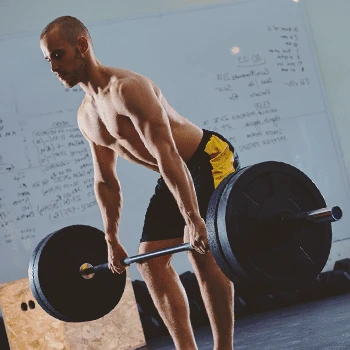
A deadlift is an excellent approach to developing powerful legs and buttocks.
With a deadlift, you lift the load from the floor to your thigh, utilizing mainly your hip and leg muscles but with support from most of your body's major muscle groups.
How to perform:
- Stand with the feet hip-width apart and turn out slightly.
- Maintain the barbell one and a half inches from the shins, so it is directly over your midfoot.
- Hold the bar with both hands just outside your legs, arms straight.
- Bend your knees and lower them till your shins are in contact with the bar.
- Squeeze the chest and inhale deeply.
- Drag the bar up your shins while keeping your back flat and gently transferring your weight towards your feet.
- Keep pulling the barbell up until you reach a standing position with your chest lifted and upper arms and shoulders back.
- Drop the barbell back down, bending both hips and knees while maintaining your back level and the bar near your shins.
- Exhale and let go of the barbell once it's back on the ground to its starting position.
- Repeat for the required repetitions.
Deadlifts are well-known for increasing muscular mass, which is helpful for bodybuilders and those who wish to avoid or reverse the loss of muscle mass caused by aging [1].
Related Articles:
5. Barbell Back Squats
Your strength is typically rated based on your squat numbers.
The back squat is one of the barbell leg workout that have good strength test since it works both the upper and lower body simultaneously while linking with a strong core.
How to perform:
- Take the bar off the squat rack, with the barbell resting on your back shoulder muscles.
- Take two large steps backward and stand with your feet shoulder-width apart and toes slightly pointing out.
- Maintain spinal alignment by staring at a location on the floor approximately two meters ahead of you, then "sitting" down and back as if reaching for a chair.
- Slow your descent until the hip is under your knee.
- Maintain your weight on the heels as you head back up to the starting position.
- Repeat for reps.
6. Barbell Front Squats
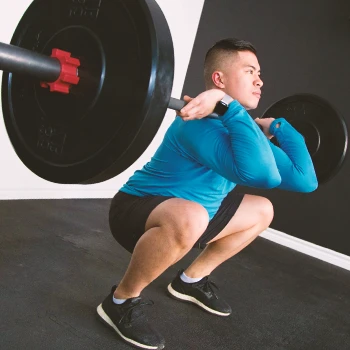
The barbell front squat requires you to support the bar in the front rack posture, lying across your shoulders.
This posture relieves strain on your back, lowers spinal compression, and pushes you to engage your upper back muscles more tightly to keep the bar from slipping forward throughout the lift [2].
The front squat develops the body's anterior muscles more strongly than the back squat, working the quadriceps and anterior core to a greater extent.
How to perform:
- Adopt a correct front rack stance by placing the barbell high on your shoulders and supporting it with your upper chest and shoulders.
- Take three steps back from the rack, keeping your chest high and shoulders down.
- Drop into a squat with the back in neutral and the torso leaning forward as little as possible.
- After reaching the bottom, push through your whole leg and stand up to your starting position, keeping an upright body, chest, and forward elbow stance.
- Repeat for the desired number of repetitions.
7. Barbell Lunge
Even though the barbell lunge isn't part of the power test, it does aid in developing muscular endurance for the workouts listed above, particularly the deadlift and squat.
How to perform:
- Put the barbell along your shoulders and directly below your neck.
- Stand with both feet hip-width apart, your elbows up, and your abs tight.
- Step forward with the left leg and drop until your right knee is two to three inches off the ground.
- Return your left foot to the starting position by exploding up.
- Rep the exercise with your right leg.
8. Barbell Hip Thrust
The barbell hip thrust is the only single-joint workout on this list.
That joint is the hip, employing the strongest muscle group in the body, the glutes.
This means the weight may be applied directly to the crease joint of the hip, resulting in a direct force.
How to perform:
- Set up a stable bench. Sit in front of the bench, having your knees bent and your upper back sunk into the seat.
- Put a bar in the hip crease, then rest your hands on it for balance.
- Push your heels into the floor and your hips up when you're ready. Repeat until the torso is completely stretched.
- Lower slowly and repeat for reps.
9. Barbell Bent-over Row
Bent-over rows are essential for muscle growth, and developing strong, toned back muscles.
They're easy yet effective.
The lats and spinal erectors are the primary movers in the barbell bent-over rows.
Numerous additional muscles, like your biceps, rhomboids (which retract the shoulder blades), deltoids, traps (which depress and lift your shoulder blades), and other tiny muscles throughout your back, actively support the rowing action pattern.
How to perform:
- Put Olympic weight plates onto an empty barbell on the floor.
- Place your feet behind the barbell like you were preparing for a deadlift.
- Hold the bar with both hands shoulder-width apart and palms facing down, using a double overhand grip (dual underhand grip if you'd like to target both biceps and rhomboids).
- Your back should be upright, and your hips hinged.
- Consider pressing the shoulder blades together.
- Bring the barbell closer to your body and aim to tap it on your sternum.
- Your elbows should extend back to the air behind you, with the palms facing down.
- Repeat until the required number of repetitions has been reached.
10. Barbell Rollout
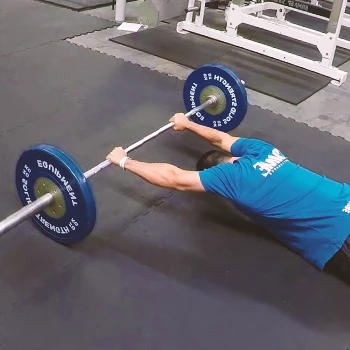
The barbell rollout is a rollout that is performed with a barbell rather than plastic rollers.
While both options are viable, utilizing a barbell offers two distinct advantages:
- You may load the barbell with weight plates to boost the intensity, and
- The barbell provides broader hand placement for people with limited shoulder mobility.
How to perform:
- Place a loaded barbell on the ground. Kneel behind it and use an overhand shoulder-width grip. If the shoulder joints are stiff, adopt a wider grip.
- Place your entire body above the barbell, arms straight. Maintain a firm core and start to let the bar roll in front.
- As you drop, push the bar out in front of your body. Continue to go down until your torso is upright. You should be as near to the ground as possible.
- Pull yourself right back using your core muscles.
- Repeat for the desired number of reps.
How and When To Use Barbell Exercises

Our best barbell exercises are listed below, but you shouldn't just go to the gym and do them all in order as your severe new workout program.
Use caution when integrating heavy barbell exercises into your regimen to reap the most advantages and avoid damage.
Because these movements recruit many motor units and stimulate the central nervous system, I usually start training sessions with them.
Choose two of these workouts as your major lifts, such as squats and deadlifts for a lower-body workout or upper-body barbell exercises, such as bench presses and barbell rows.
Of course, this does not imply that you should go right into the deep end with the major lifts.
Start with gym warm-up, then complete warm-up repetitions with an unloaded barbell, gradually increasing weight until you reach your desired weight.
"Since less recuperation time is needed when moving between body parts, this upper/lower form of training can enable you to get more work done quickly."
- Tom Wright, Personal Trainer
You may also perform a series of routines that target both your lower and upper body in a single session.
Another advantage is that it raises the heartbeat as the body circulates blood from one region to another, resulting in a greater metabolic rate and fat burning.
Benefits of Barbell Exercises

A barbell is undoubtedly the most versatile and significant workout equipment available.
With a barbell, you can perform all the complex exercises listed above, as well as numerous multi-joint and single-joint (isolation) exercises.
Below are the benefits of barbell movements.
1. Improved Strength
Barbel exercise develops strength, and that's the purpose.
Weight training can help you grow stronger, but barbells are more suited to multi-joint lifts compared to cables, dumbbells, kettlebells, or other equipment.
2. Hypertrophy
While resistance bands, kettlebells, dumbbells, and specialty equipment aid with muscle isolation, several barbell workouts may be performed to improve muscular growth.
You may obtain all the gains you need simply by performing the finest barbell workouts we discussed above.
"Barbell training doesn't need to be complicated. Pulling, pushing, squatting, and hinging will get you well on your path to a more muscular body."
- Amanda Capritto, Certified Personal Trainer
3. Stability, Balance, and Coordination
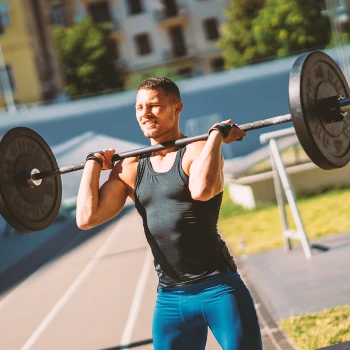
How much weight you use when barbell training makes no difference Performing these most challenging barbell exercises listed above can enhance your range of motion in daily life and other recreational activities.
Barbell exercise improves balance, coordination, and stability by increasing body awareness [3].
4. Explosiveness and Power
If you possess a barbell with some weight plates, you may build power, explosiveness, and sheer strength.
These two abilities need fast-twitch muscle fibers, which are required for actions like snatches, power cleans, throws, jerks, running, and jumping.
5. Versatility

Barbell training is quite adaptable.
Because barbell exercise is so diverse, it is less likely to bore you than exercising with only dumbbells and machines.
With a barbell, there's always something different to attempt.
You can also progress if you have enough weight plates.
6. Wellness And Health
Apart from the athletic benefits, the therapeutic effects of barbell training should not be disregarded.
Most individuals start up a barbell to get stronger or ripped, but they soon realize the advantages go far deeper than that.
Some of the health benefits of barbell training include [4]:
- Prevention of osteoarthritis and joint discomfort
- Decreased risk of cardiovascular illness
- Improved resting metabolic rate
- Reduced risk of osteoporosis and increased bone density
- Increased energy and improved mood
FAQs
Can You Build Muscles With Just a Barbell?
Yes, you can build muscles with just a barbell. They allow us to load increasingly greater weights, and since we can comfortably lift in lower repetition ranges, they are ideal for bodybuilding.
What Barbell Exercises Build Muscle?
The barbell exercises that build muscle are barbell deadlifts, barbell bench presses, barbell lunges, barbell overhead presses, and barbell squats.
How Do You Get Big With Just a Barbell?
You get big with just a barbell by performing 8-12 reps of exercises such as a barbell row, barbell shoulder press, barbell bench press, and barbell back squat.
References:
- https://pubmed.ncbi.nlm.nih.gov/32107499/
- https://pubmed.ncbi.nlm.nih.gov/19002072/
- https://www.ncbi.nlm.nih.gov/pmc/articles/PMC4003699/
- https://pubmed.ncbi.nlm.nih.gov/22777332/
About The Author
You May Also Like
